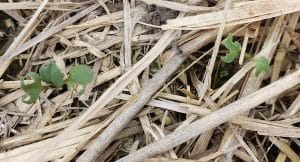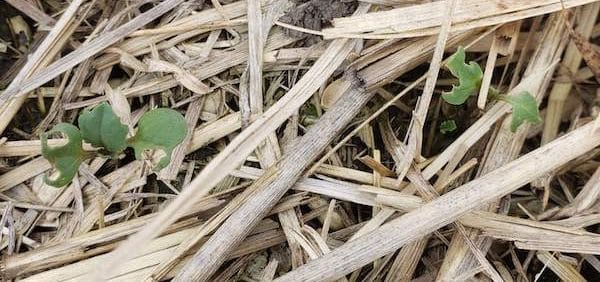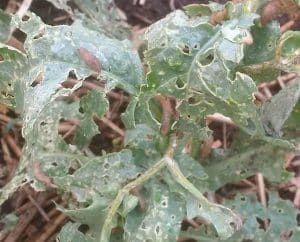Cabbage seedpod weevils. Some fields are starting to flower – which means we have to start talking about cabbage seedpod weevils (CSPW). Start scouting when canola first enters the bud stage and continue through the flowering period. The economic threshold for applying insecticides is 25 to 40 weevils in 10 sweeps. If spraying is necessary, apply when canola fields are at 10 to 20 per cent flower. Spraying too early might mean that more CSPW flock to the field after the first batch die, necessitating a second insecticide application. Spraying too late – after eggs have been laid inside developing pods – will not hurt the CSPW larvae which will be protected inside of the pods. If scouting, you can help by submitting your results here.
Slugs. OK, slugs are not an insect, but where else do we put a slug update? Slugs have been found feeding on canola in wet areas of Alberta. Areas of higher risk have heavy residue that maintains moist conditions needed for these critters to thrive. Sluggo from Belchim Crop Protection Canada is registered for slug control in canola, but is likely to require an advance order at your local retailer. Please let us know if you’ve had an issue with slugs. Metaldehyde is a molluscicide registered for slugs in vegetable gardens and ornamentals. However, even in high value vegetable crops, control is considered too expensive on a large field scale. Aside from drier conditions, one long-term management consideration for fields with high slug counts could be tillage, but that is not proven and does not provide a remedy for this year’s canola crop.

Cutworms. A nominal threshold of 25 to 30 per cent stand reduction has been suggested for cutworms in canola. Before taking action, you want to make sure cutworms are the cause. Check the edges of bare areas for cut-off plants and search the top 5 cm (2″) of soil around such plants for larvae. The key to control is early detection. When notched, wilted, dead or cut-off plants (weed or crop seedlings) are seen, dig around the roots of the plants for cutworms.

